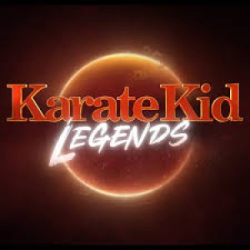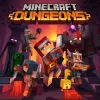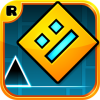My First Encounter with Karate Kid: Legends
Stepping into the world of Karate Kid: Legends was like rediscovering a piece of my youth. I eagerly booted up the game one quiet evening, hoping to recapture a sense of adventure that many of my cherished childhood memories had instilled in me. The nostalgic flavor touched every interaction, and I felt as if I were returning to a familiar dojo where every detail spoke of history and honor.
The ambient soundtrack immediately captured my attention, drawing me further into the environment. I was impressed by the respectful nods to the original series while daring to expand the lore in ways that felt both innovative and personal. As I progressed, every challenge pushed me to look deeper into the philosophy behind the game, blending martial arts with a sense of inner discovery.
From the moment I began, the intricacies of Karate Kid: Legends promised an immersive experience that was heartfelt and engaging. The developers clearly had an authentic commitment not only to the martial arts aesthetic but also to the life lessons that the franchise is known for. That mixture set one vivid tone: this was not simply a game, but a saga rich in tradition and exploration.
The early gameplay moments reminded me of the patience required to learn any discipline, and each precise movement felt like a deliberate step in a well-choreographed dance. I observed the care with which every combo and maneuver was rendered, stirring memories of hours spent practicing and training in real life and on-screen alike.
Exploration of Gameplay Mechanics
My journey continued as I delved into the core mechanics that define the game. I found that the balance between strategic combat and fulfilling mini-games was meticulously calibrated. The controls, though having a slight learning curve, eventually became intuitive, allowing me to appreciate the flow of each action-packed sequence.
One of the most notable aspects was the timing-based inputs that blended the physical flair of martial arts with thoughtful strategy. As I honed my skills, I began to appreciate how every move had a distinct purpose, leading me to explore further layers of the game. I spent long hours perfecting combos, and the sense of mastery was incredibly gratifying.
An extensive variety of moves and stances allowed me to experiment both in combat and when tackling puzzles. The evolution from basic techniques to advanced skills felt natural and rewarding, reminding me that mastery comes through effort and persistent practice. The developers invested time in ensuring that player engagement never faded over time.
This section of the game was not only about fighting but also about making decisions that affected the narrative. I found that every encounter forced me to think carefully about how I approached each fight, adding a layer of strategy that was both difficult and fulfilling. The satisfaction derived from well-timed actions and clever maneuvers gave me a sense of accomplishment that was unparalleled.
The Fluidity of Movement and Animation
One aspect that deeply impressed me was the fluid animation of the characters. The precision in each movement resonated with a genuine sense of craftsmanship. I noticed that the developers had placed great importance on replicating the natural rhythm of martial arts, capturing even the subtlest nuances of a hesitant stance or a focused leap.
Every promotional video I watched had built up hype around the striking visuals, but experiencing them firsthand exceeded my expectations. I marveled at how the seamless balance between realism and artful exaggeration made every combat sequence a spectacle. The visual clarity in the movements made it easy for me to follow each choreographed routine.
This refined fluidity conveyed a sense of authenticity every time my character moved. It reminded me of watching skilled martial artists in action while participating in the performance myself. The smart integration of slow-motion effects during crucial moments enhanced the dramatic appeal, allowing me to relish every fractional moment of action.
Observing the environmental interactions was equally impressive. Whether it was fending off adversaries in open-air arenas or choreographing maneuvers in tight spaces, I admired how the physics engine contributed to a natural sense of movement. This attention to detail helped me feel grounded in a world where artistry met functional precision.
Distinctive Narrative and Character Development
As I progressed through the game, I was unexpectedly captivated by the narrative depth hidden behind each character. I found that the game wasn’t just about epic battles, but it offered a rich storyline of personal growth and enlightenment. I was drawn into dialogues that paralleled the reflections of an eternal warrior, full of insight and moral virtue.
The game introduced me to a cast of characters who each carried their own weight in the narrative. Their backstories were skillfully developed and layered. I made it a point to pay extra attention to character interactions, recognizing that every word held a lesson on perseverance, honor, and the enduring art of discipline.
In one critical storyline, I encountered a mentor figure who challenged me to confront my anxieties and embrace vulnerability as a stepping stone towards strength. It was fascinating to watch my character evolve based on these interactions, making every in-game decision feel impactful beyond just the scores or levels.
This emphasis on personal growth transformed what might have been a straightforward action game into an evocative narrative journey. Each mission and challenge resonated with themes of self-improvement and respect for tradition, making the experience emotionally charged and introspective.
Intricacies of Level Design
What enhanced my immersion was the variety and thoughtfulness of the level designs. I found that every environment was meticulously crafted to evoke a specific mood, from serene mountain temples to bustling urban landscapes replete with hidden secrets. I explored these settings with a sense of wonder, attentive to the story each location had to tell.
The levels were structured in such a way that I was gently guided from one concept to the next, allowing me ample time to savor the well-planned transitions and discover hidden pathways. It was clear to me that there was much effort put into ensuring that each stage was unique yet cohesively tied to the overarching narrative.
At times, I enjoyed the playful challenge of uncovering secret areas, which provided a delightful break from the intense focus of combat. The interplay of light and shadows in certain areas evoked genuine emotions of both tranquility and exhilaration, reminding me of traditional martial arts films where every frame was symbolically significant.
The diverse architectural styles and the meticulous attention to environmental detail contributed a refreshing level of complexity to each area. I felt immersed not only in the gameplay but also in a world that paid tribute to the aesthetics of classic martial arts cinema.
Sound Design and Musical Arrangement
Listening to the game’s soundtrack was an experience that enchanted me from the start. I noticed that every note played a role in the unfolding drama, with traditional instruments like the shamisen and taiko drums resonating deeply as I navigated intense sequences. The audio landscape was not merely an ambient accessory, but a vital component in setting the tone of each scene.
I appreciated the precision with which sound effects were synchronized to the on-screen action. The clashing of forces, the subtle hum of tension in a quiet moment, and even the rhythmic tapping of footsteps contributed to a robust auditory environment. For every carefully choreographed move, the sound design amplified my emotional connection to the action.
As I progressed through the game, I often found myself pausing to take in the layered soundscape, recognizing it as a character in its own right. The consistency in the musical theme provided a continuous thread that reinforced the authenticity of the martial arts saga. I could easily lose myself in the music during long periods of exploration and contemplation.
The ambient sounds from nature, the rustle of leaves, and distant echoes of ancient temples all worked together to create an atmosphere of both respect and awe. Every encounter had its own unique audio cues, which served as subtle hints guiding me on where to direct my focus next. I found that this level of detail enriched my overall experience exponentially.
Visual Aesthetics and Artwork
The artistic vision behind the game was evident in its visual elements. I was immediately drawn into a universe where traditional artistry met modern digital craftsmanship. The game’s scenes were painted with vibrant colors that evoked the spirit of classical martial arts storytelling without straying into cliché territories.
I spent time admiring the carefully curated color palettes that were employed throughout, noticing how the hues shifted gradually as I transitioned from one environment to the next. The delicate interplay of light and shadow was especially striking during moments of suspense, lending a dramatic flair that was both authentic and evocative.
Every character design was distinct, reinforcing thematic elements integral to the overall narrative. I admired how the costumes, facial expressions, and physical stances conveyed deep cultural and historical significance without overwhelming the player with too much exposition. Details such as the intricate designs on traditional attire added an extra layer of respect to the visual presentation.
The background art, featuring sweeping landscapes interspersed with detailed architecture, transported me into a world that celebrated the beauty of tradition combined with the boldness of modern visuals. It was evident that artistic vision was harmoniously blended with technical expertise."
Interactive Combat Experiences
I found that the interactive combat in Karate Kid: Legends was anything but ordinary. Every encounter was an opportunity to channel my inner warrior, and I relished the moments when the screen transformed into a dynamic, interactive stage. The constant challenge presented through enemy encounters pushed my reflexes and strategic thinking to new heights.
The game allowed me to mix various techniques, encouraging a style that was uniquely my own. As each move connected with precision and purpose, I felt a deep sense of satisfaction that could only come from years of practice finally converging into a seamless series of actions. The combat system was both accessible to newcomers and endlessly engaging for those more experienced in the art.
Experimentation was rewarded with the unveiling of hidden techniques that felt deeply personal. I remember moments where subtle adjustments in my stance or timing unlocked combinations I had not anticipated, which made the entire experience feel both organic and liberating. The blend of manual input and strategic decision-making compelled me to constantly refine my approach, ensuring no two battles felt the same.
It was this balance between timing, creativity, and precision that consistently kept me on the edge of my seat. The system worked so cohesively that I began to interpret every clash as a form of dialogue between characters, where every move held intrinsic meaning and every reaction reflected a well-thought-out counter-strategy.
Customization Options and Player Progression
One of the features that genuinely excited me was the breadth of customization available. I enjoyed being able to tailor my character's appearance, fighting style, and even the aesthetic details of my personal dojo. These options allowed me to create an identity that was not generic, but rather a subtle extension of my preferred approach to the game.
The progression system was rewarding as well, making every hurdle feel like an opportunity to evolve. I appreciated how small victories led to incremental upgrades, which in turn opened up a treasure trove of new techniques and story elements. The clear sense of growth was motivating throughout every challenge I experienced.
There was also an element of choice in enhancing various attributes such as speed, strength, and agility. I found it particularly satisfying to see tangible improvements after investing time into training sessions, making me feel that my efforts were genuinely shaping my character’s capabilities. The intricate balance between offensive prowess and defensive stability was evident with each upgrade I applied.
This customization and progression added a layer of personalization that kept the game fresh over extended play sessions. The feeling of developing a unique fighting style, guided by my decisions and preferences, created an engaging sense of ownership over the entire experience.
Social Integration and Community Engagement
Interacting with fellow enthusiasts added a surprising depth to my experience in Karate Kid: Legends. I was pleased to discover a community that was vibrant and respectful, sharing insights and challenges that enriched the game.
The social features provided an avenue to connect with other players, exchange training tips, and celebrate milestones together. I often found myself participating in online tournaments and cooperative missions, which brought an element of camaraderie that I hadn’t anticipated. It was inspiring to see how shared passion had built such an inclusive network.
The forums and in-game chat options were managed in a way that ensured discussions remained focused on artful exchange and constructive feedback. I appreciated this environment, as it allowed me to learn from others while also contributing my own experiences. Engaging with players who had diverse backgrounds and approaches gave me new perspectives on strategies and storytelling nuances.
This level of community support made the game feel like an ongoing living experience, where every victory was shared and every challenge provided an opportunity for collective learning. I found that this dimension fostered a long-lasting bond among players, all of whom respected the game and its heritage deeply.
Technical Performance and Stability
While many aspects of the game were aesthetically pleasing and narratively engaging, its technical performance also impressed me. I noticed that the game maintained a consistent frame rate throughout even during the most concentrated action scenes, which ensured a smooth and enjoyable play experience.
I appreciated the meticulous attention to reducing glitches and achieving a stable streaming of visuals and audio. The refined physics engine particularly stood out, mutually enhancing combat realism and interactivity. Personally, the technical stability allowed me to focus entirely on refining my techniques and appreciating the rich details presented at every moment.
Every load time was brief and unobtrusive, providing a seamless progression from one chapter to the next. The efficient background optimization meant that I could dive headfirst into the action without the disruption of sudden lags or technical hiccups. This level of performance was something I truly valued, as it directly contributed to my overall enjoyment.
The developers seemed committed not only to the creative vision but also to ensuring that the technical foundation was robust. I admired the frequent updates that addressed player feedback and continuously enhanced stability and performance. This communal responsiveness assured me that the game was in capable hands, dedicated to ongoing refinement.
Dynamic Challenges and Strategic Depth
Throughout my journey in Karate Kid: Legends, I found that the challenges presented were both dynamic and ingeniously layered. I encountered stages that demanded not only physical agility but also rapid strategic thinking. Each scenario seemed to offer fresh obstacles that pushed me to understand the underlying system better, rather than simply repeating the same tactics.
The adversaries and in-game puzzles were designed in such a way that they required multifaceted approaches. I often had to adapt quickly, switching between defensive postures and daring offensive maneuvers with an agility of thought that resonated with deep strategic planning. Every foe and every puzzle solution was a mini-lesson in patience, observation, and creative problem-solving.
One of the memorable aspects was how the game balanced predictable sequences with completely unexpected twists. I relished every moment of uncertainty, which filled me with a sense of inquisitiveness about what would come next. This unpredictability ensured that my engagement never waned.
The strategic depth made every encounter feel meaningful. I learned to anticipate environmental cues, timing my actions precisely while ensuring that each decision led me closer to mastering the discipline. It was an exhilarating lesson in resilience and adaptive thinking that transformed routine battles into rich strategic engagements.
Screenshots
To download the app, you will get links to the Official Website and/or official digital markets.











